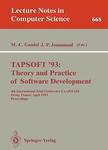版权所有:内蒙古大学图书馆 技术提供:维普资讯• 智图
内蒙古自治区呼和浩特市赛罕区大学西街235号 邮编: 010021
T=题名(书名、题名),A=作者(责任者),K=主题词,P=出版物名称,PU=出版社名称,O=机构(作者单位、学位授予单位、专利申请人),L=中图分类号,C=学科分类号,U=全部字段,Y=年(出版发行年、学位年度、标准发布年)
AND代表“并且”;OR代表“或者”;NOT代表“不包含”;(注意必须大写,运算符两边需空一格)
范例一:(K=图书馆学 OR K=情报学) AND A=范并思 AND Y=1982-2016
范例二:P=计算机应用与软件 AND (U=C++ OR U=Basic) NOT K=Visual AND Y=2011-2016

This thesis describes the design and implementation of a new computer software, the Internal Layout Module, designed to enhance the ability of the aircraft designer to arrange, modify, view, and analyze the internal components of an airplane. By considering the internal layout concurrently with the external shape and size, the configurator can effectively design the smallest airplane that meets specifications.
The module is coded in C++ entirely under the object-oriented paradigm to ease integration with existing code and to ensure future maintainability and extensibility. New components as varied as seats, galleys, lavatories and cargo containers have been designed for use in the Internal Layout Module and to provide a foundation for future object-oriented geometry for aircraft design.
The module has been successfully integrated with the aircraft conceptual design code ACSYNT (AirCraft SYNThesis). The process of adding this new object-oriented module to existing procedural code is discussed in detail.
电话和邮箱必须正确填写,我们会与您联系确认。
版权所有:内蒙古大学图书馆 技术提供:维普资讯• 智图
内蒙古自治区呼和浩特市赛罕区大学西街235号 邮编: 010021

暂无评论